Nestled in the northeastern corner of the United States, Maine’s wilderness is a sanctuary for an astonishing array of wildlife. From the shadowy depths of its ancient forests to the pristine waters of its countless lakes, this northeastern gem teems with creatures both fierce and fragile.
In this article, we embark on a journey through the untamed heart of Maine to unravel the stories of its remarkable Animals in Maine Woods, the intriguing web of life that thrives amidst the towering pines and cascading waterfalls.
From the elusive moose to the vibrant world of avian residents, and the mysterious bobcat to the resolute beaver, each species plays a vital role in the intricate tapestry of this magnificent ecosystem. Join us as we delve into the captivating world of animals in Maine woods, where nature’s untamed beauty still reigns supreme.
Overview Of Animals in Maine Woods
White-tailed Deer:
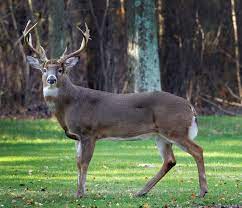
White-tailed deer are a common sight in Maine’s woods, known for their graceful presence and distinctive, fluffy white tails. These herbivores are adaptable and thrive in Maine’s forests, browsing on a variety of vegetation. White-tailed deer are a prized species for both wildlife enthusiasts and hunters alike. Their population has been managed carefully to ensure the health of the ecosystem.
In the fall, the woods come alive with the deer rut, during which males, known as bucks, engage in territorial displays and compete for mates. Their ability to blend into the forest and their keen senses make them elusive and fascinating creatures to observe in their natural habitat.
Moose:

Maine is famous for its iconic moose population. These massive, herbivorous animals are a symbol of the state’s wilderness. Maine’s woods provide an ideal habitat for moose, with their dense forests and numerous lakes and wetlands. Moose are known for their impressive antlers, which can span several feet.
Observing a moose in the wild is a thrilling experience, but they are typically solitary animals and can be elusive. Due to their size and presence on roadways, moose are a significant consideration for road safety in the state. Visitors to Maine’s woods often hope to catch a glimpse of these magnificent creatures, making them a cherished part of the state’s natural heritage.
Black Bear:
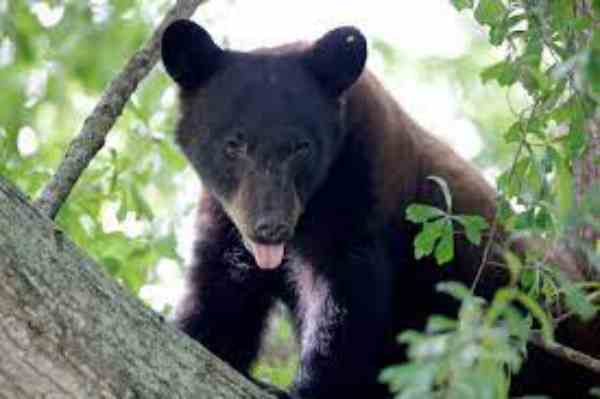
Black bears are the largest land mammals in Maine and are found throughout its woods. Despite their name, black bears can be various colors, including brown and cinnamon. These omnivorous creatures are known for their strength and agility, capable of climbing trees with ease. Maine’s woods offer an abundance of food sources for black bears, from berries and nuts to small mammals and fish.
They enter a state of hibernation during the winter months, emerging in the spring hungry and eager to forage. Although black bears are generally shy and avoid humans, it’s essential to take precautions in bear country, such as storing food properly and respecting their space. Observing a black bear from a safe distance can be a memorable experience in Maine’s wilderness.
Eastern Coyote:

The eastern coyote, often referred to as the “coywolf” due to its hybrid nature, is a fascinating predator that can be found in the woods of Maine. These animals are a result of interbreeding between western coyotes and eastern wolves, making them larger and more adaptable than their western counterparts.
Eastern coyotes are highly intelligent and have adapted well to a variety of habitats, including the woods of Maine. They primarily feed on small mammals like rabbits and rodents, but they are opportunistic hunters and scavengers. Hearing their distinctive howls echo through the woods can be both eerie and captivating, and they play an essential role in maintaining the ecosystem’s balance.
Red Fox:
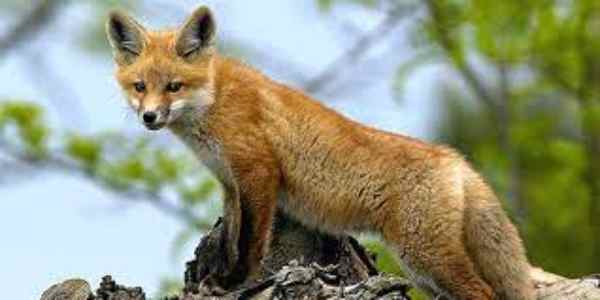
The red fox, with its striking reddish-orange fur and bushy tail, is a common inhabitant of Maine’s woods. These small carnivores are known for their cunning and agility. Red foxes have a varied diet, which includes small mammals, birds, fruits, and insects. They are skilled hunters and are often observed stalking their prey stealthily.
Red foxes are adaptable and have successfully adapted to both urban and rural environments in Maine. Their distinctive calls, which sound like a series of barks or screams, can be heard at night in the woods, adding to the mystique of Maine’s wilderness.
Gray Fox:

Gray foxes, similar in size to red foxes, are another fascinating species that can be found in Maine’s woods. They are named for their unique gray coloration and are distinguished by a black stripe down their back and a bushy tail with a black tip. Unlike their red cousins, gray foxes are known for their climbing ability, often ascending trees to escape predators or hunt for food.
Their diet consists of small mammals, birds, fruits, and insects. Gray foxes are generally more solitary and secretive than red foxes, making them a somewhat elusive sight in Maine’s forests. Observing these beautiful creatures in their natural habitat is a rewarding experience for wildlife enthusiasts.
Eastern Chipmunk:
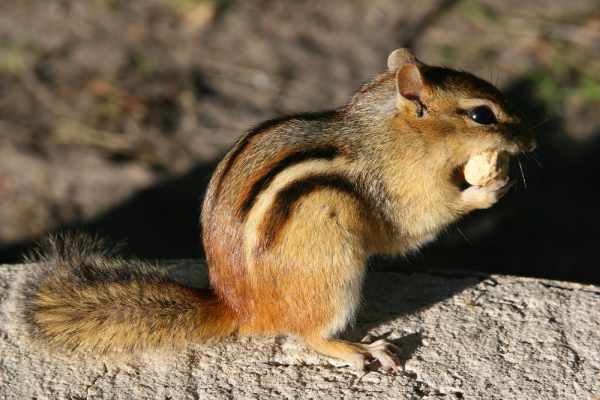
The eastern chipmunk is a small, lively rodent commonly found in the woods of Maine. These adorable creatures are recognized by their distinct stripes along their backs and their cheek pouches used for storing food. Chipmunks are busy foragers, gathering seeds, nuts, and berries during the warmer months and creating extensive burrows for shelter and storage. Their energetic antics and characteristic chirping make them a delightful and familiar sight in Maine’s woodlands.
Eastern Gray Squirrel:

Eastern gray squirrels are a ubiquitous presence in Maine’s woods and urban areas alike. These agile rodents are known for their gray fur, fluffy tails, and acrobatic tree-climbing abilities. They feed on a variety of foods, including nuts, seeds, fruits, and sometimes bird eggs and insects. Gray squirrels play a crucial role in forest ecology by aiding in the dispersal of tree seeds. They are a common sight throughout the year, often seen scampering among the trees and foraging for food.
Red Squirrel:
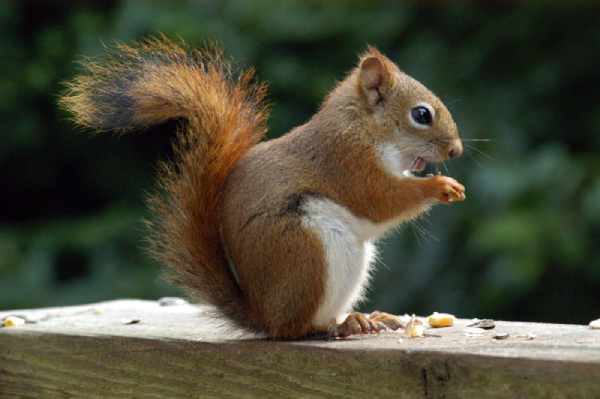
Red squirrels, smaller than their gray counterparts, are also prevalent in Maine’s woodlands. They are recognized by their vibrant reddish-brown fur and tufted ears. Red squirrels are highly territorial and can be quite vocal in defending their territories. They primarily feed on conifer seeds, which they extract from pinecones. These industrious squirrels are known for their energetic behavior and distinctive chattering calls.
Eastern Cottontail Rabbit:

The eastern cottontail rabbit is a common inhabitant of Maine’s woods and fields. These rabbits are recognized by their brown fur and fluffy white tails, which resemble cotton balls. They are herbivorous and feed on a variety of vegetation, including grasses, clover, and shrubs. Eastern cottontail rabbits are most active during dawn and dusk, and their presence is often indicated by their distinctive tracks and small, circular fecal pellets found in their habitat.
Snowshoe Hare:

Snowshoe hares are well-adapted to the winter wonderland of Maine’s woods. These hares undergo a remarkable seasonal color change, transitioning from brown fur in the summer to white fur in the winter, which helps them blend into their snowy surroundings. They are herbivores, feeding on twigs, buds, and bark during the winter months and a more varied diet during the warmer seasons. Snowshoe hares are known for their large, furry hind feet that give them better traction in deep snow, making them well-suited to their snowy habitat.
North American Porcupine:
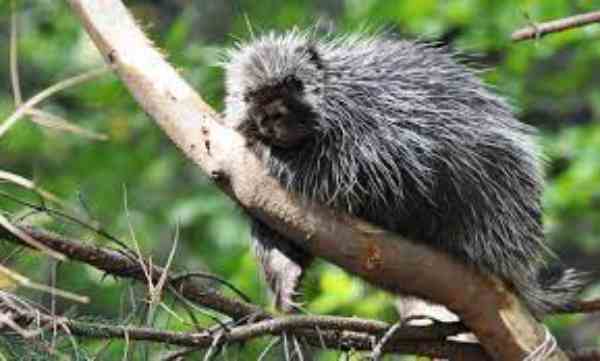
The North American porcupine is a slow-moving, herbivorous rodent that can be found in the woods of Maine. They are known for their unique defense mechanism—sharp quills that cover their bodies. When threatened, porcupines raise their quills, making them a challenging target for predators. These solitary creatures feed on a diet of bark, leaves, and tree needles, often climbing trees to reach their favorite food sources. Despite their spiky appearance, porcupines are generally peaceful animals and can be intriguing to observe from a distance.
River Otter:
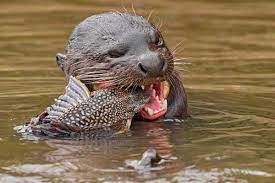
River otters are semi-aquatic mammals that inhabit the waterways and wooded areas of Maine. Known for their playful nature, these sleek, carnivorous creatures are excellent swimmers and hunters. River otters primarily feed on fish, crayfish, and aquatic invertebrates. Their playful antics in and around water make them a delightful sight for wildlife enthusiasts fortunate enough to spot them in Maine’s rivers and lakes.
American Beaver:

The American beaver is a remarkable engineer and a keystone species in Maine’s ecosystems. These large, semi-aquatic rodents are known for building dams and lodges in streams and ponds. Their dam-building activities create wetland habitats that benefit a wide variety of wildlife.
Beavers are herbivores, primarily feeding on tree bark, aquatic plants, and shrubs. Their strong, chisel-like teeth allow them to cut down trees and construct intricate structures. Observing a beaver lodge or the effects of their dam-building efforts can offer a glimpse into the complex world of these industrious creatures.
Eastern Raccoon:
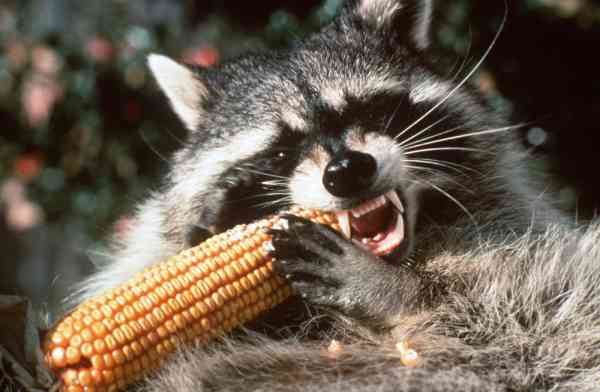
The eastern raccoon is a versatile and adaptable mammal found in Maine’s woods and urban areas. Recognizable by their distinctive black mask and ringed tail, raccoons are opportunistic omnivores. They feed on a wide range of foods, including fruits, nuts, insects, small mammals, and even human garbage when available.
Raccoons are known for their intelligence and dexterity, often using their nimble paws to manipulate objects and open containers. While they can be charming to watch, raccoons are best observed from a distance, as they can carry diseases and should not be encouraged to become dependent on human food sources.
Striped Skunk:

Striped skunks are easily recognizable by their bold black and white stripes and their distinctive, offensive odor. These nocturnal creatures can be found in Maine’s woodlands and grassy areas. Skunks are omnivores, with a diet that includes insects, small mammals, fruits, and vegetation.
When threatened, skunks will spray a foul-smelling liquid as a defense mechanism. Observing a skunk in the wild can be an intriguing experience, but it’s important to give them space and avoid startling them to avoid an encounter with their pungent spray.
Eastern Weasel:

Eastern weasels are a group of small carnivorous mammals that include the long-tailed weasel and short-tailed weasel, also known as ermine when in their white winter coat. These agile predators are skilled hunters and feed on small mammals, birds, and insects.
They are known for their slender bodies and quick movements. Weasels are primarily active during the night, making them elusive sights in Maine’s woods. Their winter color change, from brown to white, is a remarkable adaptation to the changing seasons.
Fisher (Fisher Cat):

The fisher, often referred to as the “fisher cat” (though it is not a cat), is a carnivorous mammal found in Maine’s woodlands. These creatures are members of the weasel family and are known for their agility and bold nature. Fishers are skilled hunters, preying on a variety of animals, including porcupines. They have a thick, dark fur coat and a long, bushy tail. Observing a fisher can be a rare and thrilling experience due to their elusive nature.
Bobcat:

The bobcat is a medium-sized wildcat that inhabits the forests and wooded areas of Maine. Recognizable by their short tails and tufted ears, bobcats are skilled predators. They primarily hunt small mammals such as rabbits and rodents but have a varied diet that includes birds and even deer on occasion. Bobcats are elusive and typically solitary animals, making sightings a special occurrence in Maine’s wilderness.
North American Mink:

North American minks are semi-aquatic mammals that can be found in and around waterways in Maine’s woods. These sleek, dark-furred animals are skilled swimmers and hunters, feeding on fish, amphibians, small mammals, and birds. Minks are known for their playful behavior, especially when they are young. They create burrows near water to shelter and raise their young, making them a fascinating part of Maine’s aquatic ecosystems.
North American Marten:
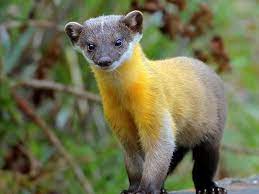
The North American marten, also known as the pine marten, is a small carnivorous mammal found in Maine’s wooded areas. These creatures have a long, slender body and a beautiful brown fur coat. Martens are agile climbers and skilled hunters, preying on small mammals and birds. They are generally elusive and solitary animals, making sightings a special treat for those exploring the woods of Maine.
Eastern Red Bat:

Eastern red bats are small, tree-dwelling bats commonly found in Maine’s woods. They are recognized by their vibrant reddish fur and have distinctive white patches on their shoulders. Red bats are agile fliers, often seen fluttering through the night sky as they hunt for insects. During the day, they roost in trees, where their reddish fur blends in well with foliage. These bats play a crucial role in controlling insect populations and are an important part of Maine’s ecosystem.
Hoary Bat:

The hoary bat is another species of bat that can be found in Maine’s woodlands. These bats are larger than the eastern red bat and are known for their frosted or “hoary” appearance, with silver-tipped hairs on their fur. Hoary bats are migratory, and they travel long distances between their summer and winter habitats. They feed on insects and are often seen in flight during the evening hours, hunting for prey in the dark.
Little Brown Bat:

Little brown bats are one of the most common bat species in Maine and are prevalent in woodlands, caves, and buildings. They are small, with brown fur and a wingspan of about 8 to 11 inches. These bats primarily feed on insects and are incredibly beneficial to ecosystems as natural pest controllers. Unfortunately, little brown bats in Maine and other regions have been affected by white-nose syndrome, a disease that has had a significant impact on their populations. Conservation efforts are ongoing to protect these essential bats.
Northern Flying Squirrel:

The northern flying squirrel is a small, nocturnal rodent that can be found in Maine’s woodlands. Despite their name, flying squirrels don’t actually fly; instead, they glide from tree to tree using a flap of skin called the patagium. These squirrels have large, expressive eyes that aid them in their night-time activities. They primarily feed on nuts, seeds, insects, and fungi. Observing a flying squirrel in flight or during its gliding descent can be a rare and enchanting experience in Maine’s woods.
Eastern Spotted Skunk:
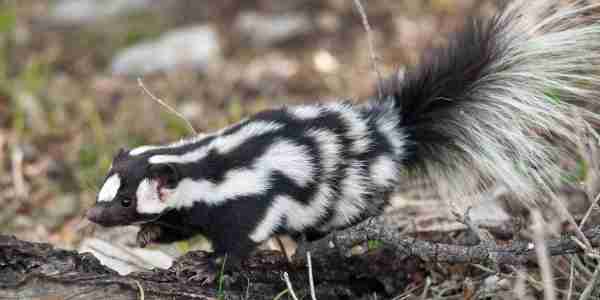
The eastern spotted skunk is a less common skunk species in Maine, known for its distinctive spotted pattern on its back and sides. They are smaller than striped skunks and have a more slender build. Spotted skunks are omnivores, feeding on a diet that includes insects, small mammals, fruits, and plants. Like other skunks, they have the ability to spray a foul-smelling liquid as a defense mechanism. These skunks are generally nocturnal and are less frequently encountered than their striped counterparts.
Eastern Box Turtle:

Eastern box turtles are terrestrial reptiles found in Maine’s woodlands, particularly in forested areas near wetlands and streams. These turtles are easily recognized by their distinctive domed shell, which they can retract into for protection. Eastern box turtles are omnivores, consuming a diet of insects, worms, fruits, and vegetation. They have a slow reproductive rate and are listed as a species of special concern in some areas, emphasizing the importance of protecting their habitat.
Timber Rattlesnake:

Timber rattlesnakes are venomous snakes found in the woodlands of southern and western Maine. These snakes are characterized by their distinctive rattles on the end of their tails, which they use as a warning signal when threatened. Timber rattlesnakes are primarily ambush predators, preying on small mammals like rodents. They play an essential role in controlling rodent populations. Due to their venomous nature, it’s important to exercise caution and respect when encountering timber rattlesnakes in the wild.
Eastern Garter Snake:

Eastern garter snakes are non-venomous snakes commonly found in Maine’s woodlands and grassy areas. They are small to medium-sized snakes with a distinctive pattern of stripes running along their bodies. Garter snakes are opportunistic predators, feeding on a variety of prey, including insects, amphibians, and small mammals. These snakes are often encountered in gardens and other human-impacted areas, where they help control pest populations.
Northern Water Snake:

Northern water snakes are semi-aquatic snakes that inhabit the waterways and wooded areas of Maine. They are characterized by their dark-colored bodies with distinctive bands or blotches. Northern water snakes are skilled swimmers and are often seen basking near water or hunting for prey, which includes fish, amphibians, and small mammals. While they are non-venomous, they can be aggressive if cornered or threatened.
Various Species of Salamanders:
Maine’s woods are home to a variety of salamander species, each adapted to specific habitats. Some common salamanders in Maine include the Eastern Red-backed Salamander, Northern Two-lined Salamander, and Four-toed Salamander. These small amphibians are often found in moist and wooded areas, including forests, streams, and wetlands. They play an important role in nutrient cycling and are indicators of ecosystem health. Salamanders are known for their unique life cycles, often involving aquatic larval stages and terrestrial adult stages.
Various Species of Frogs and Toads:
Maine’s woodlands are also teeming with frogs and toads, which contribute to the state’s rich biodiversity. Common species include the Wood Frog, American Toad, and Gray tree frog. These amphibians are often found near water sources such as ponds, streams, and vernal pools, where they breed and lay their eggs. Their calls are distinctive and can be heard during the spring and summer months, adding to the soundscape of Maine’s woodlands. Frogs and toads are vital in controlling insect populations and are important indicators of environmental health.
Birds:
Maine’s woodlands are a haven for birdwatchers, as they provide habitat for a wide variety of bird species. In addition to the Bald Eagle and Common Loon mentioned earlier, Maine’s forests are home to the majestic Osprey, the powerful Northern Goshawk, and numerous species of owls, woodpeckers, warblers, and other songbirds. Whether you’re exploring the dense woods or the treetops, you’re likely to encounter a diverse array of bird species, each contributing to the intricate tapestry of Maine’s avian life.
Amphibians Like the Eastern Newt:
The Eastern Newt is a fascinating amphibian species found in Maine’s woodlands. It has a unique life cycle with three distinct stages: the aquatic larval stage, the terrestrial juvenile stage (often referred to as the “red eft”), and the aquatic adult stage. Eastern Newts are typically found near forested ponds and wetlands. Their bright orange coloration during the terrestrial stage makes them stand out against the forest floor. These newts are an essential part of Maine’s amphibian diversity.
American Bullfrog:
The American Bullfrog is a large and highly adaptable amphibian that can be found in various aquatic habitats within Maine’s woodlands. These frogs are known for their deep, resonant calls during the breeding season. Bullfrogs are opportunistic predators, feeding on insects, smaller amphibians, and even small mammals. They have a widespread presence in ponds, lakes, and slow-moving streams, and their distinctive calls are often associated with the sounds of summer in Maine.
The Significance of Maine’s Woods for Wildlife:
Maine’s woods stand as a bastion of hope for countless species of wildlife. Its vast, unspoiled landscapes offer a crucial haven for creatures both big and small. The sprawling forests provide crucial shelter, feeding grounds, and breeding spaces for numerous animals, from the iconic moose and elusive lynx to the countless bird species that grace its skies.
These woods are not only a refuge but a lifeline for species teetering on the brink of endangerment. Maine’s rich biodiversity and intricate ecosystems rely on the balance maintained within its woods. The preservation of this habitat is not just essential for the survival of these creatures; it also enriches the lives of those who have the privilege to observe and cherish this untamed wonderland.
Tracking and Wildlife Observation:
Venturing into Maine’s woods offers the unique opportunity to become a silent observer of nature’s theatre. Tracking the footprints of animals through the snow, watching a majestic bald eagle soar above pristine lakes, or catching a glimpse of a black bear ambling through the underbrush are experiences that ignite a deep connection with the natural world.
Wildlife observation in Maine is a cherished pastime and an invaluable tool for researchers. Through patient tracking and keen observation, we can learn about animal behavior, migration patterns, and population health. These woods are a living laboratory where humans can quietly witness the daily dramas of the wild, fostering appreciation and understanding that are vital for conservation efforts.
Conservation Challenges and Initiatives:
However, this sanctuary faces an array of conservation challenges. Rapid urbanization, habitat fragmentation, and climate change pose grave threats to Maine’s wildlife. As human activities encroach further into their territory, animals struggle to adapt. This has led to increased human-wildlife conflicts, with issues like moose-vehicle collisions becoming more prevalent.
To counter these challenges, a host of conservation initiatives have emerged. From land trusts and wildlife corridors to education and advocacy, passionate individuals and organizations are working tirelessly to protect Maine’s woods and its inhabitants. These efforts aim not only to safeguard the natural heritage of Maine but to ensure the survival of these species for generations to come.
Final Words:
Maine’s woods are not merely a backdrop for picturesque landscapes; they are the heartbeat of a delicate and complex ecosystem, where the interplay of flora and fauna weaves the fabric of life. As we delve deeper into this wilderness, we find not just stories of survival but tales of resilience and adaptability.
Maine’s woods remind us of the profound responsibility we bear to protect and cherish these ancient landscapes and the creatures that call them home. By embracing sustainable practices, supporting conservation efforts, and fostering a deep respect for the wild, we can ensure that Maine’s woods remain a sanctuary, not just for animals, but for the human spirit that seeks solace and inspiration in the untamed beauty of the natural world.
Reference:
- https://www.maine.gov/ifw/fish-wildlife/wildlife/species-information/mammals/index.html
- https://www.britannica.com/place/Maine-state/Plant-and-animal-life#:~:text=Sugar%20maple%2C%20yellow%20birch%2C%20aspen,species%20abound%20throughout%20the%20state.
- https://wolf.org/wow/united-states/maine/

Jeevan Kodiyan
An animal enthusiast with an interest in zoology, studying the behavior and activities of animals in the wild habitat. I work on research projects related to species conservation and endangered species protection. I also leverage zoology to become an educator, educating others about the importance of protecting our natural environment and the beauty of animals in their natural habitats.









